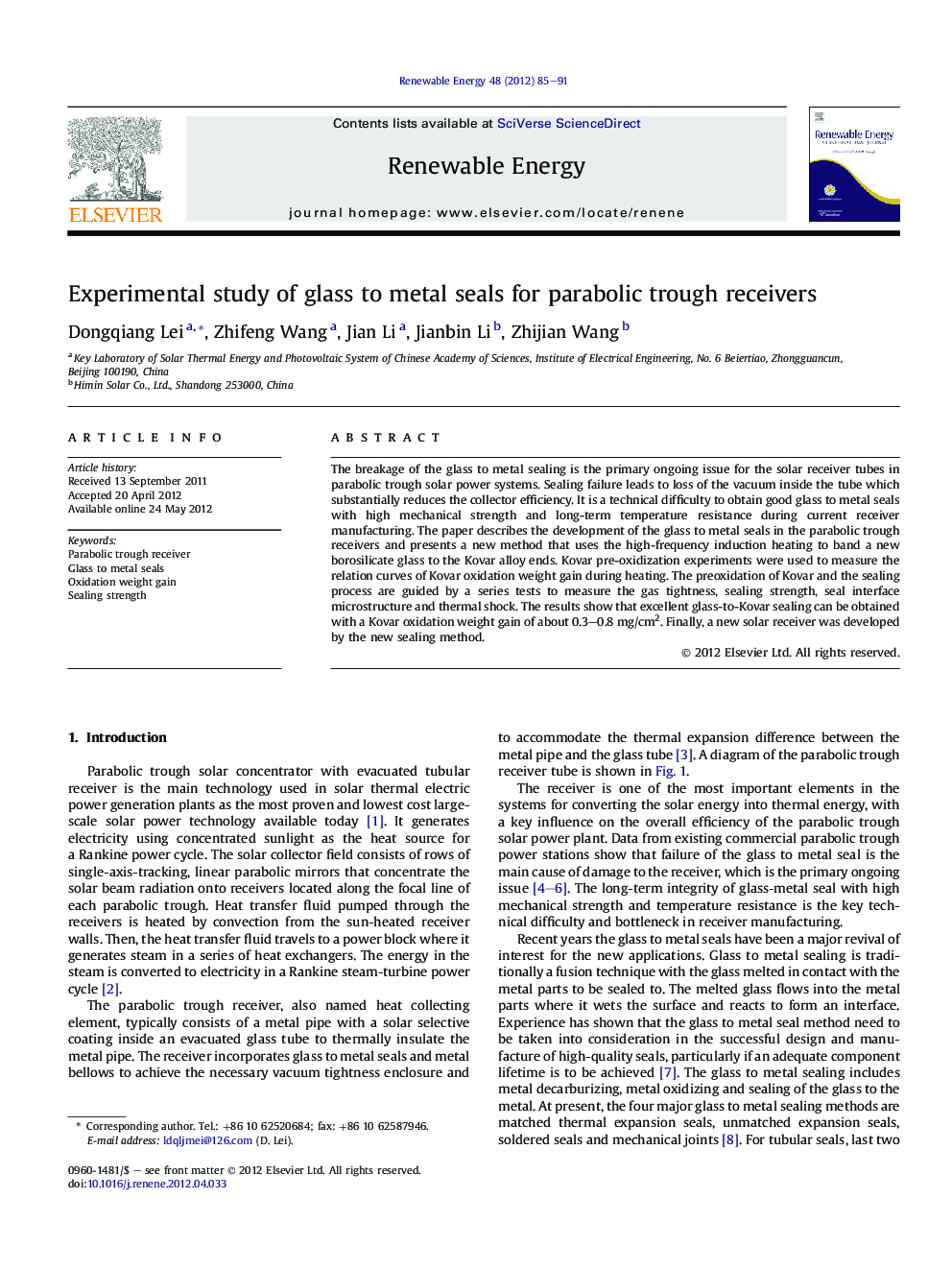| Article ID | Journal | Published Year | Pages | File Type |
|---|---|---|---|---|
| 300858 | Renewable Energy | 2012 | 7 Pages |
The breakage of the glass to metal sealing is the primary ongoing issue for the solar receiver tubes in parabolic trough solar power systems. Sealing failure leads to loss of the vacuum inside the tube which substantially reduces the collector efficiency. It is a technical difficulty to obtain good glass to metal seals with high mechanical strength and long-term temperature resistance during current receiver manufacturing. The paper describes the development of the glass to metal seals in the parabolic trough receivers and presents a new method that uses the high-frequency induction heating to band a new borosilicate glass to the Kovar alloy ends. Kovar pre-oxidization experiments were used to measure the relation curves of Kovar oxidation weight gain during heating. The preoxidation of Kovar and the sealing process are guided by a series tests to measure the gas tightness, sealing strength, seal interface microstructure and thermal shock. The results show that excellent glass-to-Kovar sealing can be obtained with a Kovar oxidation weight gain of about 0.3–0.8 mg/cm2. Finally, a new solar receiver was developed by the new sealing method.
► Induction heating is used to create high-quality glass-to-Kovar seals. ► The Kovar preoxidation rate rapidly increases with the temperature. ► The oxide film weight gain initially increases rapidly with time and then slows. ► Sealing strength first increases and then decreases with increasing oxide film. ► Excellent sealing is obtained with oxidation weight gains of 0.3–0.8 mg/cm2.
